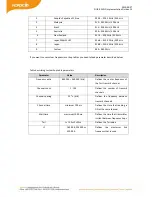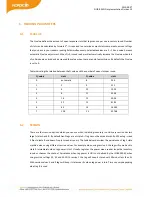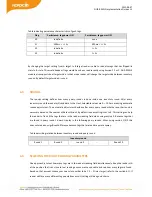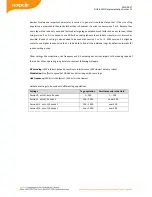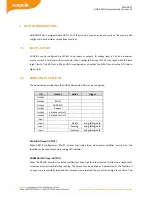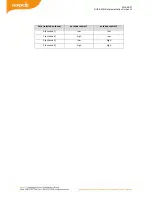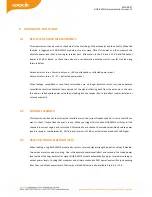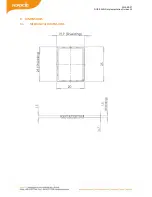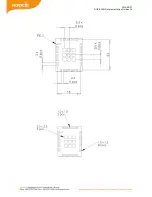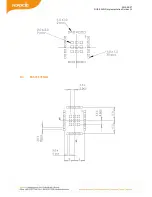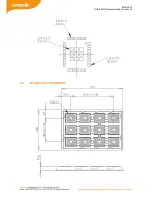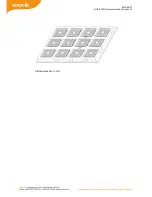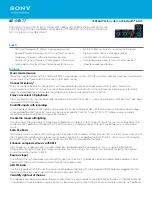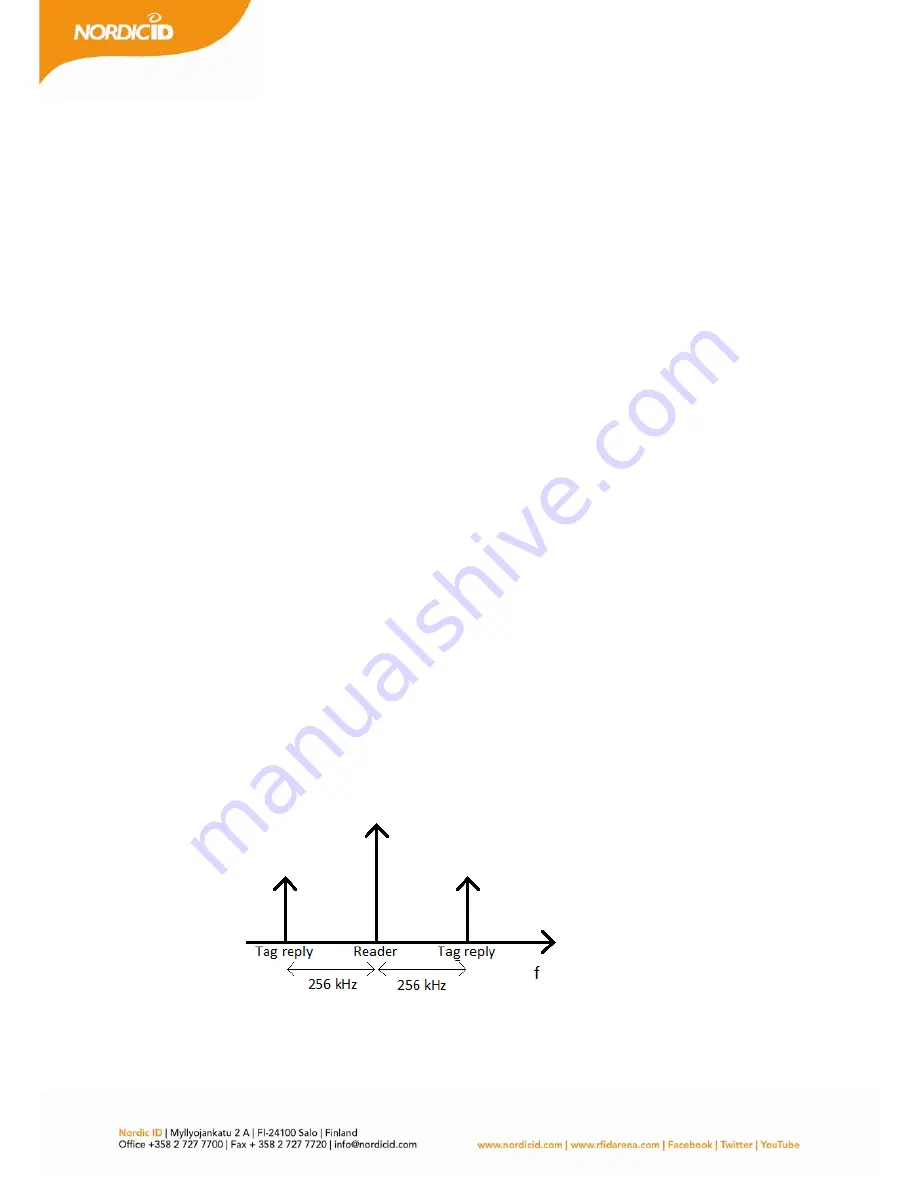
2013
‐
09
‐
27
NUR
‐
05WL2
Implementation
Guide
v1.1
tuning
does
not
match
the
RF_OUT
with
an
antenna
so
the
good
VSWR
(return
loss)
of
the
antenna
is
an
essential
factor
of
the
good
performance
of
the
system.
5.4
MODULATION
It
is
possible
to
use
ASK
(amplitude
shift
keying)
or
PR
‐
ASK
(phase
reversed
amplitude
shift
keying)
modulation.
Tags
that
are
compliant
with
ISO18000
‐
6C
(EPC
C1G2)
must
support
both
of
these
modulations.
The
PR
‐
ASK
modulation
can
transfer
energy
more
efficiently
to
the
tag
because
RF
envelope
is
high
more
than
it
is
using
ASK
modulation.
By
default
the
modulation
is
set
to
PR
‐
ASK.
5.5
LINK
FREQUENCY
The
link
frequency
affects
the
frequency
offset
of
tags
reply
in
respect
to
reader’s
carrier
wave.
For
example
when
used
link
frequency
is
256
kHz,
tag
will
reply
at
the
frequency
of
reader
transmission
frequency
±
256
kHz.
The
selectable
parameters
are
160
kHz,
256
kHz
and
320
kHz.
Tags
that
are
compliant
with
ISO18000
‐
6C
(EPC
C1G2)
must
support
all
these
parameters.
The
link
frequency
also
affects
tag
to
reader
data
rate
which
is
calculated
by
formula
below:
Tag
to
reader
data
rate
=
(Link
frequency
/
Miller
coding)
By
default
the
link
frequency
is
set
to
256
kHz.
256
kHz
or
320
kHz
settings
must
be
used
when
operating
in
DRM
mode.
It
must
be
remembered
that
changing
these
parameters
may
cause
reader
to
violate
region
or
country
specific
radio
regulations.
Following
is
a
guideline
for
how
to
choice
right
setting.
If
channel
bandwidth
is
200
kHz
than
256
kHz
or
lower
link
frequency
should
be
used
(for
example
in
EU).
When
operating
in
a
region
where
500
kHz
channel
bandwidth
is
available
also
320
kHz
link
frequency
can
be
used.
Spectral
separation
caused
by
256
kHz
link
frequency
and
Miller
sub
‐
carrier
encoding.
5.6
RX
ENCODING
(MILLER
ENCODING)
Summary of Contents for NUR-05WL2
Page 1: ...2013 09 27 NUR 05WL2 Implementation Guide v1 1 NUR 05WL2 IMPLEMENTATION GUIDE ...
Page 25: ...2013 09 27 NUR 05WL2 Implementation Guide v1 1 9 DIMENSIONS 9 1 MECHANICAL DIMENSIONS ...
Page 26: ...2013 09 27 NUR 05WL2 Implementation Guide v1 1 ...
Page 27: ...2013 09 27 NUR 05WL2 Implementation Guide v1 1 9 2 LAND PATTERN ...
Page 28: ...2013 09 27 NUR 05WL2 Implementation Guide v1 1 9 3 PASTE STENCIL ...
Page 29: ...2013 09 27 NUR 05WL2 Implementation Guide v1 1 9 4 PACKING TRAY DIMENSIONS ...
Page 30: ...2013 09 27 NUR 05WL2 Implementation Guide v1 1 All measures are in mm ...

















